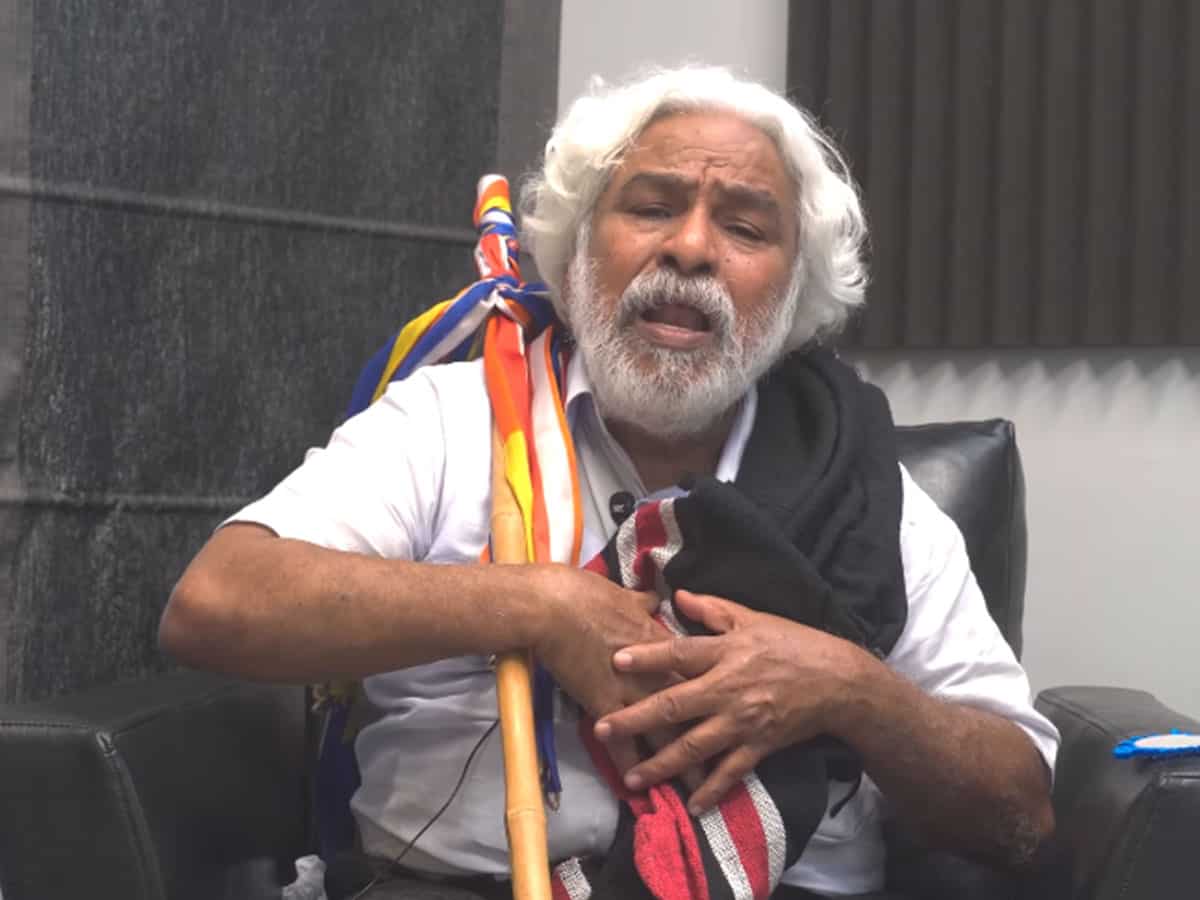
Hyderabad: Balladeer Gaddar, who passed away the other day, was a folk singer par excellence. He cast a spell on the audience when he got into the rhythm. A hush would descend as he stepped onto the stage in the typical Telangana shepherd outfit, a red turban rakishly tied on the forehead. As he sang in a rustic voice to the accompaniment of ‘dafli’ and jingling anklets, one couldn’t help but indulge in rhythmic tapping of foot.
His way of singing attracted not just the rural folks but urbanites too. City youth who go bonkers on the Western music and swing to a different beat are also fascinated by Gaddar.
During the 1990s, the revolutionary ballad singer set up a performing arts school by name ‘Prajakala’ to impart training in bhavam, raagam and talam. He also co-founded the Jana Natya Mandali, the Telugu cultural troupe of the CPI-ML. The legendary poet-singer played a significant role in reviving the Naxalite movement in Andhra Pradesh.
His school of art
Gummadi Vithal Rao, popularly known as Gaddar, did not want folk arts to languish, particularly his brand of ballad singing. Therefore, he decided to preserve and propagate the folk musical form among the talented persons under his direct patronage. He had his own way of teaching. He would invite experts to talk on different topics of current interest and then ask the students to pick an idea and develop it into a song and skit. Of course he was there to fine-tune the whole thing.
This reporter had the opportunity to interact with Gaddar and visit his institute in 1998. Folk art lovers came from far off places to the school set up by him in Venktapuram locality of Alwal. Many of them liked music, both Western and Hindustani, but it was the folk songs that held a special appeal to them.
“Folk arts are taught at the Telugu University but none can teach you the style and technique which Gaddar used to great advantage”, says an artist.
He was shot at once
Those days Gaddar used to keep a low profile ever since he was shot at in April 1997. As such those who came to learn the folk art preferred to remain anonymous as they were afraid of rubbing the law on the wrong side. Gaddar himself was concerned about the safety of his pupil. “I am teaching pure folk arts and not the PWG ideology here. Anyone can come and see for himself”, he remarked.
Gaddar was not surprised by the sudden explosion of interest in folk arts among urbanites. He knew the tremendous power his songs wielded when he got into the rhythm. “There is no better medium to touch heart strings”, he often said.
The maestro just did not give instructions but accompanied the learners step by step. Often he would pause to help them get the words right. A perfectionist to the core, he was not satisfied until the learners picked up the traditional beat, steps and accent and tried to do a la Gaddar.
What is special about his songs?
Well they are all deeply rooted in tradition and form the essence of the socio-political and cultural milieu of the region. He had a song and dance for every occasion. The diverse influences and upheavals felt in the geographical boundaries of the State are all reflected in his ballads.
The balladeer is no more. But his folk songs and the revolutionary message they carry would continue to move souls.



